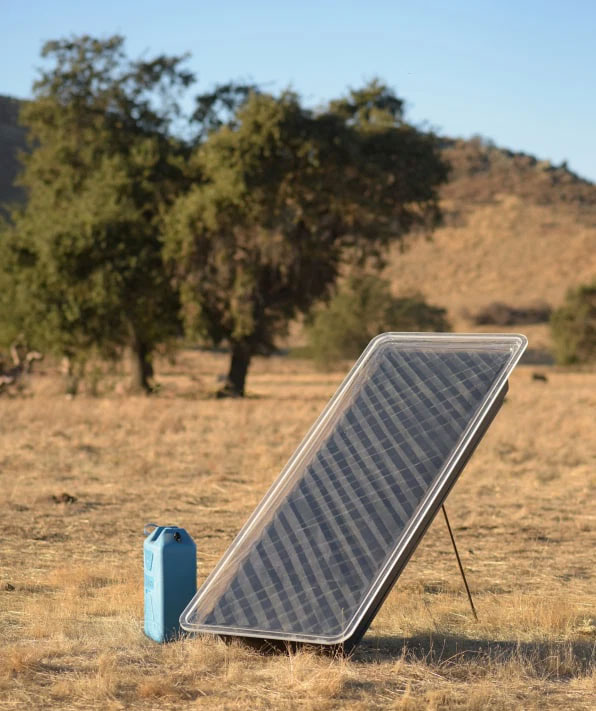“If we can increase the speed of providing clean water in any way, we believe that is a goal worth pursuing.”
Last year, on the roof of the parking lot at Google’s headquarters, engineers working on the X-Alphabet project installed a new system, ready to test and demonstrate the effectiveness of their long-standing research efforts. They call it the “atmospheric water harvester”; a machine that pulls air from the surrounding environment, using solar heat and an electric fan to create condensation, producing drinking water at a rate measured in drops per minute.
In a study published in the journal Nature, the team presented calculations showing the amount of water that could be harvested to determine whether the system could quench the thirst of communities living in arid regions. Based on data from WHO/UNICEF and comparing the performance of the water harvester under different climate conditions, the research team reached a reassuring conclusion: Approximately 1 billion people lacking drinking water live in climate areas where the machine will operate reliably.

These machines are affordable and simply designed.
Large water filtration projects, such as desalination plants, take years to plan and complete, while small-scale machines can help struggling communities survive until drinking water becomes abundant. “With a solar-powered device, we can overcome a range of obstacles that address the root of the problem,” commented Jackson Lord, the lead author of the study.
At the same time, the X-Alphabet team is exploring a series of projects aimed at addressing various pressing issues, including new renewable energy sources and more efficient farming methods. They have attempted to find ways to produce clean water multiple times but only succeeded by setting aside many other challenges to focus on producing potable water. This promising project was initiated in 2017.
“One-tenth of 1% of the clean water in the world goes into our mouths,” said Astro Teller, director of the X project. “The remaining 99% is used for bathing, washing dishes, agriculture, and similar activities. None of these require the water to be clean… Once we change our perspective, we will be able to implement solutions that seem impossible.”
These affordable and simply designed machines may not produce enough water to meet all daily needs, but in many places, they will serve as a crucial source of drinking water. The new device can operate independently without a constant power supply, thereby eliminating additional overhead costs. It uses solar panels to power the fan and heat to condense water directly from sunlight.
The design of the machine is also straightforward: one fan draws air from the outside, while a desiccant extracts moisture from the air. The other fan regulates the airflow within the machine, so when the hot air from outside meets the cool air inside, water droplets form. For every hour of operation in a space of 1 square meter, the experimental machine generates 150 milliliters of water; under ideal conditions, it can produce 5 liters of water per day.
Despite its simple design, the machine’s performance has not yet met Alphabet’s expectations. Google’s parent company aims to produce water at a cost of 1 cent per liter (approximately 230 VND per liter), while the research team found that a figure of 10 cents per liter would be more feasible in the near future.
However, since this cost is low enough to be acceptable, Alphabet has published all information related to the project, including data on tested prototypes and documentation related to the hardware and software of the machines. Anyone can download this information through GitHub or Figshare.
“We don’t always do this, but in this special case, we believe the project is on the right track and has enough potential to be worth sharing with the world,” Mr. Teller remarked.
“If we can increase the speed of providing clean water in any way, we believe that is a goal worth pursuing,” researcher Lord concluded.


















































